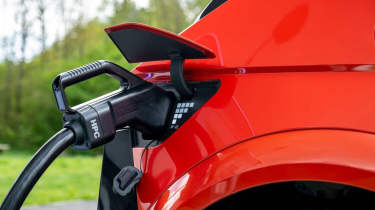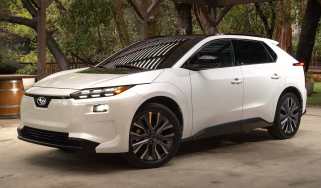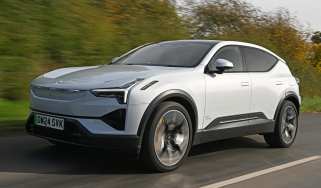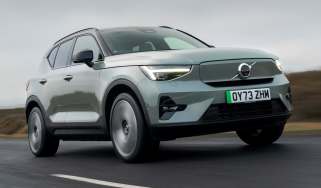EV range anxiety: what is it and is it still a concern in 2024?
The term ‘range anxiety’ has long surrounded EVs, but what does it mean, and do we still need to worry about it?

Electric cars are currently experiencing a peak in popularity, and their technology is advancing at a rapid pace, but some drivers are unwilling to give up combustion-engined motoring due to ‘range anxiety’, also known as ‘charging anxiety’. But what is range anxiety, and is it still an issue in 2024?
 Tesla Supercharger network explained
Tesla Supercharger network explained
Range anxiety is the worry that your electric car will run out of charge before you make it to your destination, leaving you stranded. Of course, this isn’t a feeling exclusive to electric cars; most petrol and diesel-car drivers will have felt the same nervous sensation when the fuel gauge reads empty and there’s still a few miles left to travel. However, most drivers seem to feel more comfortable driving a car that’s low on fuel than they do an EV that’s low on charge – and that’s largely due to the infrastructure around us.
Why do EV drivers get range anxiety?
While petrol and diesel cars have been on our roads for decades, mainstream electric cars are still relatively new, and the necessary charging infrastructure has been playing catch up. Even if you’re somewhere unfamiliar, you can be fairly sure that a place to refill a petrol or diesel car is close by, but that’s not always been the case for electric cars.
Yes, you can recharge an EV using a three-pin plug virtually anywhere, but the time this takes is far too impractical for most drivers – it’s not unusual for a full recharge to take over 24 hours. The UK’s electric car charging network is growing steadily, with over 34,000 charging locations at the time of writing, but the majority are still classified as ‘slow’ chargers. More rapid charging locations are cropping up every month, but EV drivers are understandably worried that there won’t be somewhere nearby for a quick top up if their battery runs low.
The next issue arises if worst comes to worst and you really can’t find anywhere to charge. Running out of fuel in a petrol car is inconvenient to say the least, but getting back on the road isn’t too tricky – you can track down a nearby fuel station, put petrol into a can and take it to the car. You can’t do that with electricity for obvious reasons – you need to take the car to the plug. While a recovery service might be able to give your car a tiny amount of power to get you to a charging station, a more likely scenario is the added cost and aggravation of having to get a tow truck to recover you.
Towing an electric car is also inconvenient. While you can pull a petrol or diesel car along with a tow rope or by lifting two wheels with a towing van, you can’t do this with some electric cars. Some car makers even state that their electric models can only be transported on flat-bed trucks, as pulling them along will damage the motors.
Should we still be concerned about range anxiety in 2024?
All of the issues above served as a major barrier for drivers looking to make the switch to the first electric cars. Early adopters had access to few public chargers and largely had to rely on charging at home. But with a growing network of public chargers, combined with modern electric cars that can travel upwards of 300 miles on a charge, is range anxiety a justified concern in 2024?

That will depend on your individual circumstances, but most drivers of modern electric cars shouldn’t be overly concerned about range anxiety. If you’re able to charge your electric car at home, and only need to use the public charging network to top up on a long journey, then range anxiety probably won’t be a huge issue for you.
It’s a slightly different situation for those who can’t charge at home and are completely reliant on the public charging network, as there’s no guarantee you’ll have somewhere to top up your car when it’s not being driven. That means more of your charging will need to be completed while you’re out and about, increasing the risk of running low on charge between stops. In this case, it’s worth thinking about how far you drive on a regular basis and whether you have access to nearby public charging facilities before taking the plunge on an EV.
However, supermarkets, petrol stations and even pubs are all installing more charging points and it’s not a stretch to expect that in ten years, you’ll be able to charge your car up virtually anywhere, just as is the case with refuelling now.
The latest EVs have also made range anxiety far less of an issue today. Some early electric cars like the original Nissan Leaf could barely reach 100 miles of range, but the latest models can travel much further, thanks to improvements in battery technology. The Hyundai Ioniq 5, Kia EV6, Polestar 2 and Tesla Model Y can all easily reach 300 miles of range thanks to their large battery packs. For most drivers, that will be more than enough range for the majority of their journeys.
What can you do to stop range anxiety?
The main thing to keep in mind here is the range of your car. Take note of your car’s expected range before you set off, and keep a close eye on it while driving. Remember that range can vary significantly with the temperature and the types of road you’re driving on, so don’t expect to travel as far in winter as you do in summer, or as far on a hilly, fast A-road as on flat city streets.
You will get used to checking your remaining range and how your driving affects it after a short while owning an electric model. It’s no different to driving a petrol car as the fuel gauge is ‘approaching the red’ – don’t wait for it to get to a worrying number before you look for somewhere to recharge.
All electric cars will have a different range depending on how you drive them, too – drive gently and economically, and you’ll get further on a single charge. Many models have an ‘Eco’ mode that limits the car’s speed and reduces functions such as the air-conditioning to maximise range. You should switch this mode on if you’re starting to worry about range.
You can use apps like Zap-Map or built-in services on your car’s sat-nav system to find nearby charge points. You can even see if they’re currently in use, which is particularly useful, and you can also plan journeys in advance to make sure you are always topped up before heading into a part of the country where recharging options are minimal or non-existent.
If you're considering an EV but worry about range anxiety, check out our list of longest-range electric cars…
More on electric cars
- What is an electric car?
- EV charging stations explained
- How long do electric car batteries last?
- How to charge an electric car?
- Plug-in car grant explained
- How to buy a used electric car
- How to find EV charging stations
- Fast charging or rapid charging?
- Are electric cars green?
- Are electric cars cheaper to run?
- How much do electric cars cost?
Recommended

New Subaru Trailseeker revealed as rugged electric SUV with 375bhp

New Subaru Solterra brings more range, power and polish
Most Popular
Tips & advice

Car dashboard warning lights: what does each symbol mean?

Electric car charging stations: public networks, charger types, apps and maps







